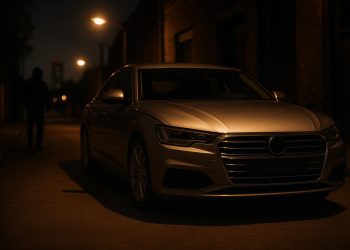South Africa’s auto market just hit its highest monthly sales figures in 10 years. Over 55,000 new vehicles were sold in October 2025, a number not seen since 2015. This reflects growing consumer confidence, better financing options, and increased demand after years of cautious spending. Key highlights include:
- Passenger vehicles led sales, followed by light commercial vehicles.
- Top brands: Toyota, Suzuki, Volkswagen, Ford, and Chinese brands like Haval gained traction.
- Best-selling models: Toyota Hilux, Volkswagen Polo Vivo, Suzuki Swift, and Haval H6.
- Businesses and rental companies also contributed by upgrading fleets, signaling broader economic recovery.
While this growth is a positive sign for the industry, challenges remain for local manufacturing, especially with the rise of imported vehicles and the global shift toward electric cars. October 2025’s performance suggests a promising outlook for South Africa’s automotive sector, but structural issues need attention to maintain momentum.
October 2025 Sales Numbers
Total Sales and Annual Growth
October 2025 marked a major achievement for South Africa’s new vehicle market, with total sales exceeding 55,000 units. This impressive figure highlights strong year-over-year growth, reflecting positive economic signals within the automotive sector. It suggests that the industry’s recovery is closely tied to broader economic improvements.
Sales by Vehicle Type
Although exact numbers for October are still awaited, recent trends show passenger vehicles continuing to dominate the market. This category – which includes sedans, hatchbacks, SUVs, and crossovers – remains the primary driver of sales. Additionally, there are early signs of growth in the commercial vehicle segment, particularly in light commercial vehicles and trucks. This uptick points to increasing business confidence and the momentum of infrastructure development projects. These trends hint at a steady recovery and provide a basis for deeper market analysis.
Market Growth Pattern
The performance in October 2025 extends a consistent growth trajectory, signaling a long-term recovery rather than a temporary spike. This sustained progress reflects improved market conditions and growing trust among both consumers and dealers. The steady pace aligns with predictions for a lasting revival in the automotive sector.
What Drove Record Sales Growth
Industry Pricing and Financing
A surge in sales was largely fueled by competitive pricing. The entry of Chinese automakers into the market pushed established brands to lower their prices across various segments. Additionally, the reduction in import duties under the APDP program made vehicles more price-friendly, giving buyers more reasons to shop around.
As the Naamsa President put it, "Domestic new vehicle sales are set to surpass pre-pandemic levels for the first time in five years, driven by strong demand for affordable cars."
Improved financing options and incentives for electric vehicles also played a key role in boosting purchases. These pricing strategies not only reshaped how manufacturers approach the market but also had a noticeable impact on what buyers are looking for.
Consumer Buying Patterns
Shifting consumer behavior has gone hand-in-hand with competitive pricing. Affordability has become a top priority for buyers, who are now leaning toward models that deliver solid value rather than focusing on premium features. This trend underscores a growing preference for practicality over luxury.
Affordable cars drive SA’s vehicle sales past pre-pandemic levels
sbb-itb-09752ea
Top Brands and Models
October’s vehicle sales data highlights some standout performances among both brands and models, showcasing a dynamic market.
Best-Selling Brands
Toyota led the charge in October 2025, claiming the top spot in new-vehicle sales. Suzuki followed closely, thanks to its lineup of compact, fuel-efficient cars that resonated with a wide range of buyers. Volkswagen maintained a strong position as well, while Chinese brands like Haval and GWM gained traction, carving out a growing presence in the market. On the commercial vehicle front, Ford and Isuzu delivered impressive results, further solidifying their reputations in this segment. Together, these brands shaped a diverse and competitive landscape.
Top Vehicle Models
The top-selling models echoed the success of their respective brands. The Toyota Hilux dominated the pickup category, cementing its place as a favorite among buyers. For passenger cars, the Volkswagen Polo Vivo emerged as the leader, reflecting its appeal as a practical and affordable choice. In the compact car segment, the Suzuki Swift posted notable sales, while the Toyota Corolla Cross excelled in the compact SUV category. Among Chinese automakers, the Haval H6 stood out as the best-selling model, marking a significant achievement for Chinese brands in South Africa. The Ford Ranger also delivered robust sales, further reinforcing its stronghold in the commercial vehicle market.
Market Trends and Impact
October’s record-breaking sales numbers aren’t just about higher figures – they reflect a deeper evolution in consumer preferences and market dynamics. These shifts are shaping the way both individuals and businesses approach vehicle purchases.
Buyer Behavior Changes
The surge in sales highlights a shift in what consumers value most. Buyers are increasingly looking for vehicles that offer durability, cost savings, and lower long-term ownership expenses. On the commercial side, businesses are finally updating their fleets after years of holding back on investments. For personal buyers, decision-making has become more calculated, with a strong focus on fuel efficiency, maintenance costs, and overall reliability.
Fleet and Rental Sales
Fleet and rental sales have played a significant role in driving October’s strong performance. Businesses, buoyed by renewed confidence, are replacing outdated vehicles, while rental car companies are actively replenishing their inventories. Government and municipal agencies have also resumed vehicle purchases that were previously delayed, further boosting sales. These trends hint at broader adjustments across the automotive industry.
What This Means for the Industry
For dealerships, these shifts mean rethinking inventory strategies to cater to both budget-conscious and premium buyers. Manufacturers may interpret this trend as validation of strategies focusing on reliability and practicality, potentially leading to new innovations and competitive pricing.
For consumers, this could translate into shorter delivery times and price adjustments as brands compete for market share. The strong sales momentum might also encourage lenders to offer more attractive financing options, reflecting the improved economic outlook.
October’s performance is seen by many as a sign of sustained growth ahead, driven by better economic conditions and renewed consumer confidence. These developments suggest a promising road ahead for the automotive market.
Key Takeaways from October 2025
October 2025 marked a major shift in South Africa’s automotive market, with new-vehicle sales surpassing 55,000 units. This milestone highlights not only strong market performance but also growing consumer confidence, signaling a recovery that exceeds pre-pandemic levels after years of cautious spending. Buyers appear more willing to make significant purchases, reflecting improving economic conditions. However, this growth also brings challenges the industry must address.
One of the biggest hurdles lies in local manufacturing. Imported vehicles, particularly those from Chinese brands, are putting pressure on domestic production. This trend threatens the government’s Automotive Production and Development Program (APDP) goals, which aim to boost local manufacturing and employment. Domestic vehicle production has fallen short of expectations, with concerns mounting over "semi-knocked-down (SKD)" operations. These processes rely on minimal local components and create fewer jobs, raising questions about their long-term impact. While vehicle exports currently sustain many jobs in the industry, the global transition to electric vehicles and upcoming bans on internal combustion engines in key export markets pose significant risks.
For industry professionals, dealerships, and consumers, understanding these rapid changes is critical. Platforms like ImotoNews South Africa provide in-depth coverage of industry trends, offering valuable insights to help stakeholders navigate both opportunities and challenges. The October sales milestone reflects renewed consumer confidence but also serves as a reminder for the industry to address structural issues and adapt to ensure sustainable growth in the years ahead.
FAQs
What drove the record-breaking new-vehicle sales in South Africa in October 2025?
October 2025 saw new-vehicle sales in South Africa hit an all-time high, with over 55,000 units sold. This remarkable achievement was largely driven by a noticeable rise in consumer demand for budget-friendly vehicles, signaling a shift in buyer preferences toward more economical choices. On top of that, a combination of favorable economic conditions and enticing industry incentives helped fuel this surge.
Interestingly, this milestone aligns with the strong performance seen in September 2025, which also posted impressive sales numbers. Together, these trends point to growing consumer confidence and a promising trajectory for the automotive market in South Africa.
What impact are Chinese car brands having on South Africa’s vehicle market and local manufacturing?
Chinese car brands are gaining traction in South Africa’s vehicle market. With their affordable pricing, sleek designs, and improving reliability, they’ve managed to attract a diverse group of buyers, steadily increasing their market share.
On the production side, some Chinese automakers have begun setting up manufacturing plants in South Africa. This move not only creates job opportunities but also gives the local economy a boost. These facilities bring in advanced technologies and contribute to skill development, further strengthening the nation’s automotive industry.
What challenges could South Africa’s automotive industry face in sustaining its record-breaking sales, especially with the growing shift to electric vehicles?
South Africa’s recent upswing in new-vehicle sales is noteworthy, but keeping that momentum going could be an uphill battle – especially as the global automotive industry leans more heavily into electric vehicles (EVs). The impressive sales figures from October 2025 reflect strong demand, yet the local EV market has its share of obstacles. Limited charging infrastructure, the higher initial price tags of EVs, and a comparatively slow rollout of government incentives put South Africa at a disadvantage compared to other regions.
On top of these EV-specific challenges, the broader economic environment adds another layer of complexity. Fluctuating exchange rates, unpredictable fuel prices, and concerns about consumer purchasing power could all influence future sales. Tackling these issues head-on will be crucial for sustaining growth and keeping pace with the rapidly changing automotive world.
Related Blog Posts
- SA EV Sales Growth 2025: Key Numbers
- 2025 Car Market Trends: What South Africans Are Buying Now
- South Africa Vehicle Exports by Type 2025
- New Car Sales in Summer vs Winter: Key Differences





